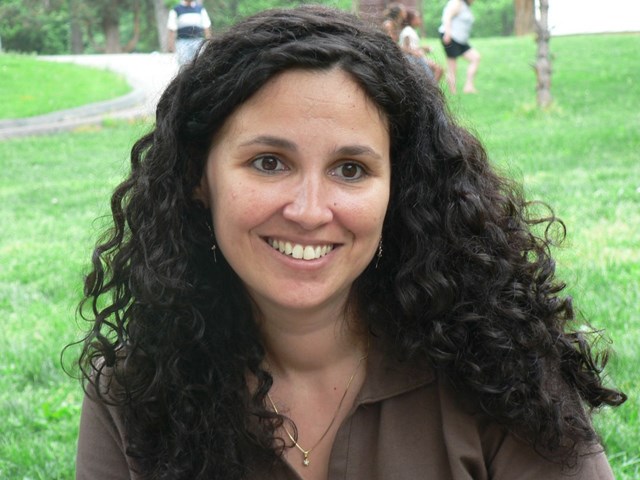
Running parallel to our blood vessels is another network of vessels: the lymphatic system. This equally lifegiving network serves as a conduit for everything from immune cells to fat molecules to cancer cells. Prof. Karina Yaniv of the Weizmann Institute of Science’s Department of Biological Regulation became fascinated with the lymphatic system early in her career, when she realized that this crucial, basic network was surprisingly poorly understood.
“It’s a very important system that hasn’t received enough attention,” says Prof. Yaniv. “In particular, it was puzzling to me that no one really knew how lymphatic vessels form during embryonic development.”
In a historic breakthrough, Prof. Yaniv and her team grew lymphatic cells in the lab.
Prof. Yaniv decided to tackle this question using the zebrafish embryo as a model. Zebrafish embryos develop outside the mother’s body and are nearly transparent, making it possible for researchers to document the embryos’ developmental stages in real time over several days.
In the past, some scientists claimed that the lymphatic system was derived from specialized stem cells called angioblasts, whereas others argued that embryonic veins, which come first, differentiate into lymph vessels. The latter model ultimately became the accepted view.
In 2015, Prof. Yaniv and her team revealed that scientists on both sides of the argument had been correct. Her groundbreaking study, published in Nature, showed that lymphatic cells do indeed grow from veins, but they originate from a niche within the vein lining that harbors angioblasts.
To make this discovery, Prof. Yaniv imaged developing zebrafish embryos and then played the movies backwards to identify the point at which the lymphatic system began to form. She noticed that the cells that give rise to lymphatic vessels always originated in the same part of the embryo’s major vein. Investigating that spot, she and her group found a niche of angioblasts – the same cells that, many years earlier, were proposed as the source of lymph vessels.

Her next question was, what caused the angioblasts to create lymphatic vessels in the first place?
An in-depth genetic analysis identified a gene called WNT5B as the factor prompting stem cells to differentiate into lymphatic cells. When the scientists added WNT5B to human embryonic stem cells, those cells differentiated into lymphatic cells – the first time that such cells had ever been grown in the lab.
Her discoveries could help treat lymphedema, a condition that can occur when lymph nodes are abnormal, damaged, or removed, such as after breast cancer surgery.
“Now that we know how to generate lymphatic cells in the lab, we’re in the process of optimizing this protocol so that it can be used in the clinic,” says Prof. Yaniv. One of her major goals is to develop a treatment for lymphedema, a condition that occurs when the lymph system develops abnormally, lymph vessels are damaged, or lymph nodes are surgically removed. As a result, lymph fluid is not able to flow through the body the way it should, and so accumulates in soft body tissues and causes swelling – most often in an arm or leg.
Lymphedema affects an estimated 10 million people in the U.S. and is most commonly caused by the removal of or damage to lymph nodes during cancer treatment. It is particularly an issue in mastectomies, as lymph nodes are often removed.
“Currently there’s no cure for lymphedema, and even though it’s not life-threatening, it really is a devastating disease that impacts patients’ quality of life,” says Prof. Yaniv. “We want to be able to generate lymphatic cells that can be injected in the area of the surgery, which hopefully will build new lymphatic vessels.” Oscar-winning actor Kathy Bates, who developed lymphedema after breast cancer surgery, presented Prof. Yaniv with the Lymphatic Education & Research Network’s 2016 Wendy Chaite Leadership Award.
Prof. Yaniv’s investigations into how blood and lymphatic vessels form during embryonic development may, in the future, lead to new therapies for not only lymphedema, but heart disease, stroke, cancer, and other illnesses.
The Weizmann Institute’s focus on quality of life “allows you to do the very best science,” she says.
A native of Córdoba, Argentina, Prof. Yaniv joined the Weizmann Institute as a senior scientist in 2009. As a highly talented young researcher, Prof. Yaniv had many offers after her postdoc. However, Weizmann won: besides its considerable commitment to its scientists, the Institute actively promotes quality of life – a characteristic that appealed to Prof. Yaniv. She says that she knew she would be supported in her roles as both a scientist and a mom of three young sons, saying: “When you live on campus, very close to your office, and take advantage of resources such as the on-site daycare, this allows you to do the very best science.”
Prof. Yaniv has recently begun visiting local high schools to encourage young women to pursue careers in science. With her students at the Institute, she shares her methods for overcoming the daily challenges. “I tell them that it’s not easy – but if you want it, you can do it,” she says.
Dr. Karina Yaniv’s research is supported by the Fondazione Henry Krenter; the Daniel S. Shapiro Cardiovascular Research Fund; the David M. Polen Charitable Trust; and the European Research Council.
